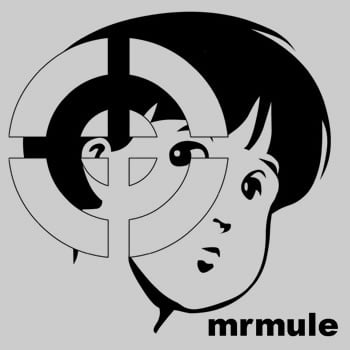I’ve learned about them in school, but I’ve never heard anyone say something is 8 decameters long or anything like that. I’m an American.
For distance, no. Day to day we use mm, cm, m and km. But in more specialised settings (e.g. construction) I’ve seen sometimes decameters.
For weight yes, grams, hectograms, kg, tons. Liquids is usually ml, cl, liters, hectoliters (not sure it’s spelt that way).
In labs I’ve also seen also micro and nano of all three units.
Use cubes for water. Short for cubic meter. That is 1 meter by 1 meter by 1 meter which is also exactly 1000 liters.
This is one of the convenient metric parameters where they made an easy conversion allowing you to precisely use distance to calculate volume.
Valid, but rarely used, as it’s usually just as fast to say “two hundred meters” instead of “two hecto meters”.
However, those prefixes have other (non-SI) uses. A hectare is common way of referring to a 100x100 meter area. And a decare is 10 ares, i.e. 0.1 hectare.
In The Netherlands we actually use “hectometerpaaltjes”, which translates to hectometer-signs. They are numbered signs placed on regional roads and highways every 100 meters, which is a hectometer. Although not a direct use of measurement, the term hectometer still is in active use this way.
As an American who has gotten very used to metric units in studying engineering, the general rule I picked up is that you typically only change units every three orders of magnitude. So 8 decameters would typically be expressed as 80 meters, maybe 0.08 kilometers. Decameters and hectometers are a thing, but they’re not common units. Even centimeters don’t see much use compared to millimeters.
We usually go for the 3 order rule, but in the case of areas and volumes, for dimensional reasons, dam and hm make it into the three order rule. Dm (or dam) is not common but dam^3 has some uses, the same goes for hm, hm is used for only special situations (like meassuring train distances), but hm^2 is almost globally used for big chunks of land. Also, with hm^2, we always keep the unit, so for example, Parque Nacional Iguazú in Argentina has 67620 hm^2 (also ha or hectarea).
I’m also an engineer and I generally despise imperial units, but I have to say that inchs are pretty handy and the 1 in = 25,4000… mm relation is pretty neat
in school in austria we teach dezimeter (tenth of a meter)
Decimeter is used in older American botany books for some reason. Only place I’ve ever seen it
From my experience in Norway, these are typical in context of daily speech:
Weight (gram): tonne (a substitute name for Mg (Mega)), kg, hg, g, mg, μg (mostly in medicine)
Distance (meter): mil (10 km), km, m, dm (kinda rare), cm, mm
Volume (liter): l, dl, cl, ml
In my experience, the deca-predix is very rarely used. Most of the missing prefixes are just substituted for numbers, i.e. saying “a thousand kilometers” is much more common that “a megameter”. Of course, this differs depending on context, as a lot of the prefixes become more common within scientific fields where the sizes are common.
On a separate note, even the numbers can be a bit inconsistent. It has bothered me that it’s often common to say “a thousand milliard” instead of “one billion” (also note that we use the long scale).
In Germany Hectoliter is also used to calculate beer volume in commercial settings, like planning for a bar or a festival.
„Kommerziell“
From my experience in Norway, these are typical in context of daily speech: (…) km, m, dm (kinda rare), cm, mm
Don’t forget the Scandinavian mile! You and the Swedes use it all the time.
Not sure how I forgot that! Will edit it in!
μm and nm used in engineering and science fields fairly frequently
It depends on the situation, sometimes they are really handy but most of the time we stick to kilo, centi and mili.
Where i live, Hecto (100x) is used, for example to measure distances and areas for big properties. 1 hectometro equalls 100 m, or 1 hectarea (hm^2) equals 10000 m^2.
Also, it is widely use for pressure, cause 1 atm is 1013 hPa
Decameters are used but for special situations, like quantifying natural gas consumption
In Poland: decimeters are sometimes used (I have been ordering cut sheet metal priced by square decimeters) , I have not seen decameters in use. Hectopascales are often used in weather reports. Decagrams are often used when buying food where these amounts make most sense (meat, candy).
The ‘more exotic’ prefixes are usually only used with some specific SI units and in very specific contexts.
Yes, they are used, but typically in specialized applications which is why you don’t see them every day.
In America, I’ve seen nurses and diabetics use deciliters in reference to medication or concentration before.
Deci is 0.1 and that gets used frequently, deka is 10 and never gets used at all, except in Austria when grocery shopping at the deli counter. 🤷
Hekto is 100 and similarly never gets used, not even by Austrians.
Norwegian here, hekto gets used when buying fresh meat or fish
Deciliters are not infrequently used in recipes here as well. I’ve never seen decameters or hectometers used by anyone.
In metric units, we primarily use the x1000 or x1/1000 steps, with a few notable exceptions. We use the centimeter (1cm = 1/100m) quite commonly, the centiliter (1cl = 1/100l) is also relatively common with drinks, and, IIRC, the Austrians use the deka, short for decagram (1dg = 10g).
We use litres, which is one decimetre cubed. We use hectares, which is one hectometre squared. But the beauty of it is, that you can just convert everything to units that are more widely understood.
-
1 decimetre = 10 centimetres = .1 metres
-
1 hectometre = 100 metres = .1 kilometre
Hektoliter is common in Germany for measuring quantities of beer (not a single serving, of course, but when buying beer for some kind of venue or measuring the output of a brewery)
-
These two specifically - I don’t think I’ve ever seen them.
Hectoliters are sometimes used e.g. for measuring beer consumption for an event, decimeters in some informal contexts, some country commonly describe drink sizes in centiliters or deciliters.
Centimeters are common, I’d say more common than millimeters in informal context.
I think hectare, decibel are few of them?
Sweden uses decimeters and deciliters
And hectograms. We just shorten it to ”hekto” though. It’s how we buy stuff from the deli. ”2 hekto salami please”.
The silly Austrians would ask for “20 Deka Salami, bitte.” It’s weird.
Sweden also uses mil for distance, which is 10^4 meters (10 km)
Sweden is also the only country in the world to have a sensible use of the word ‘miles’ (or ‘mil’ in Swedish):
10km = 1 mil
They use this a lot when speaking of travel distances longer than 20km.
In Canada anything over 20km is referenced as time. “it’s about an hour drive”







